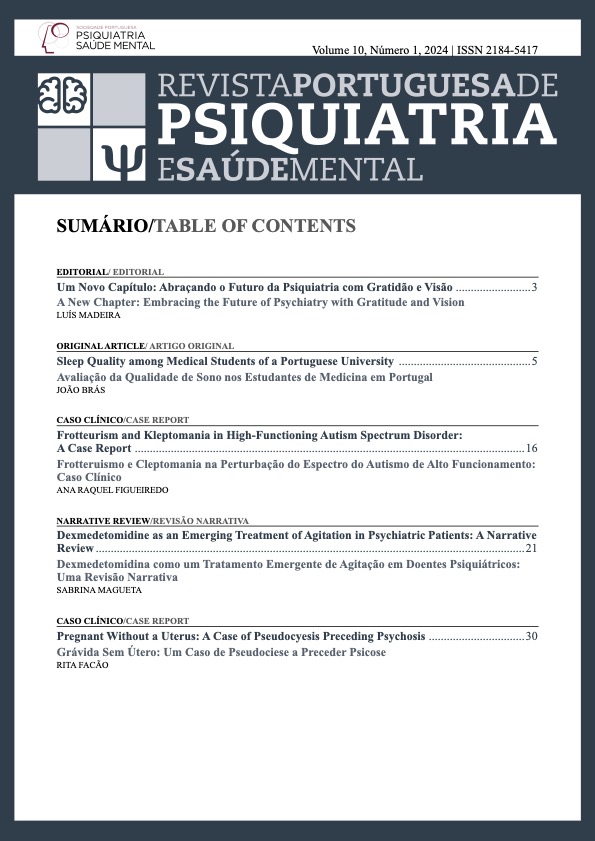Pregnant Without a Uterus: A Case of Pseudocyesis Preceding Psychosis
DOI:
https://doi.org/10.51338/rppsm.524Keywords:
Pseudopregnancy/psychology, Psychotic Disorders / etiologyAbstract
Pseudocyesis is an uncommon syndrome in which a woman firmly believes to be pregnant, and manifests signs and symptoms of pregnancy, in the absence of true gestation. A woman of 37 years of age, hysterectomized at 34 and was currently divorcing an 85-year-old vasectomized man, after engaging in an extra-conjugal relationship. Soon after, she developed signs and symptoms of pregnancy and the belief of being pregnant. After being exposed to additional stressors such as sleep deprivation, she presented for psychiatric evaluation with a psychotic episode, centered around a delusional pregnancy. She was admitted and treated with antipsychotics, which enabled full remission, matching a diagnosis of brief psychotic disorder. When the belief in pregnancy takes the form of a delusion, it is arguably easier to treat than as an overvalued idea, or pseudocyesis vera. Although little is known about prognosis, psychotherapy may play an important role in relapse prevention.Downloads
References
O’Grady JP, Rosenthal M. Pseudocyesis: a modern perspective on an old disorder. Obstet Gynecol Surv 1989;44:500–511.
Tarín JJ, Hermenegildo C, García-Pérez MA, Cano A. Endocrinology and physiology of pseudocyesis. Reprod Biol Endocrinol. 2013;May 14;11:39. doi: 10.1186/1477-7827-11-39.
Azizi M, Elyasi F. Biopsychosocial view to pseudocyesis: A narrative review. Int J Reprod Biomed. 2017;15:535-42.
American Psychiatric Association. Somatic Symptom and Related Disorders. In: Diagnostic and statistical manual of mental disorders: DSM-5. Chicago: APA; 2013. p. 309–27.
International Classification of Diseases: ICD‐10 [Internet]. World Health Organisation; 2019 [cited 2023 Sep 21]. Available from: https://icd.who.int/browse10/2019/en#/F45.8
Knobil, Ernst, Jimmy D. Neill, editors. Encyclopedia of Reproduction. New York: Academic Press; 1998.
Starkman MN, Marshall JC, La Ferla J, Kelch RP. Pseudocyesis: psychologic and neuroendocrine interrelationships. Psychosom Med. 1985;47:46-57.
Sadock BJ, Sadock VA, Ruiz P, editors. Synopsis of Psychiatry. 11th ed. Philadelphia: Lippincott Williams and Wilkins; 2015.
Starkman MN. Impact of psychodynamic factors on the course and management of patients with pseudocyesis. Obstet Gynecol. 1984;64:142-5.
Mortimer A, Banbery J. Pseudocyesis preceding psychosis. Br J Psychiatry. 1988;152:562-5.








